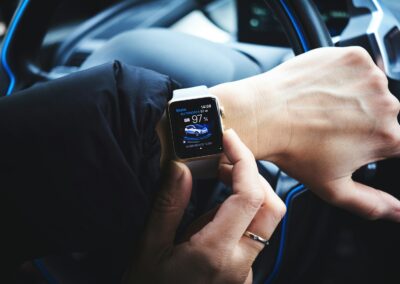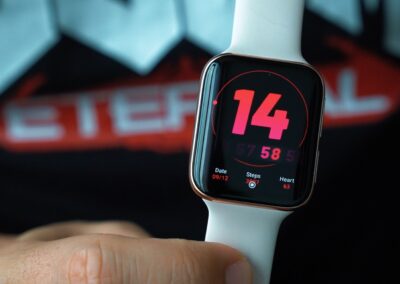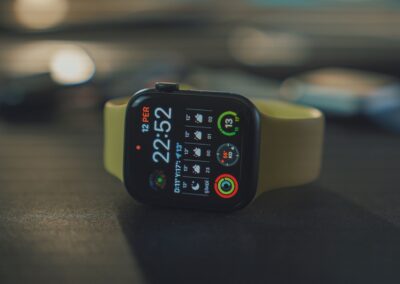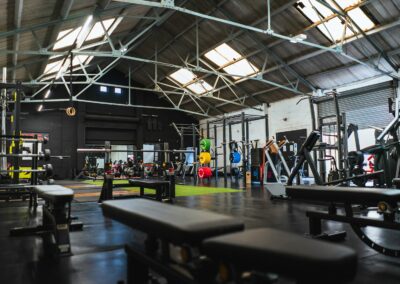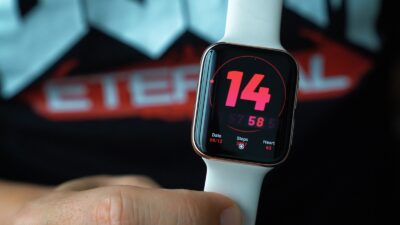Transforming Fitness with Virtual Reality, Wearables, and Artificial Intelligence
The Convergence of VR Fitness, Wearables, and AI
The integration of VR fitness with wearables and AI represents a significant leap forward in the fitness industry, offering comprehensive and personalized fitness solutions. This fusion of technologies is poised to revolutionize how individuals approach physical fitness, providing immersive, data-driven, and interactive experiences. For business executives, mid-level managers, and entrepreneurs, understanding this technological synergy can unlock new opportunities for innovation and growth in the fitness sector.
Virtual reality (VR) fitness programs offer an engaging and immersive way to exercise, making workouts more enjoyable and effective. By integrating wearables, such as smartwatches and fitness trackers, these programs can monitor users’ biometric data in real time, providing immediate feedback on their performance. This data-driven approach allows for more personalized workout plans that cater to individual needs and goals. For instance, in cities like Riyadh and Dubai, where technology adoption is high, fitness centers can leverage these integrated solutions to attract tech-savvy clients.
Artificial intelligence (AI) further enhances VR fitness programs by analyzing the data collected from wearables and making real-time adjustments to the workout. AI algorithms can assess a user’s fitness level, progress, and preferences to recommend tailored exercises, ensuring that each session is both challenging and achievable. This personalization not only improves the effectiveness of the workouts but also keeps users motivated and engaged, reducing dropout rates.
Enhancing User Experience and Engagement
The integration of VR fitness with wearables and AI provides a multi-faceted approach to fitness that enhances user experience and engagement. Wearables track various health metrics, such as heart rate, calories burned, and steps taken, which can be visualized in real-time within the VR environment. This immersive feedback loop makes the workout more interactive and allows users to see the immediate impact of their efforts.
For example, a user in a VR fitness program could see a virtual representation of their heart rate zone, encouraging them to maintain or adjust their intensity to achieve optimal results. This immediate feedback is crucial for users to understand their physical limits and push themselves safely. Additionally, AI can offer real-time coaching tips based on the data from wearables, providing users with guidance similar to what they would receive from a personal trainer.
In regions like Saudi Arabia and the UAE, where there is a growing focus on health and wellness, integrating these technologies can support government initiatives aimed at promoting a healthier lifestyle. Fitness centers can offer state-of-the-art VR fitness experiences that attract a broad demographic, from tech enthusiasts to those looking for new ways to stay active. Moreover, these advanced fitness solutions can be marketed as premium services, providing a competitive edge in a crowded market.
Implementing Integrated VR Fitness Solutions
For businesses looking to implement VR fitness integration with wearables and AI, several key steps must be taken to ensure success. Firstly, investing in high-quality VR fitness content is essential. This involves developing or licensing VR fitness programs that are engaging, varied, and scientifically validated. Partnering with experienced VR content creators can help businesses create compelling experiences that keep users coming back.
Secondly, businesses need to select compatible wearables that can seamlessly integrate with their VR systems. Ensuring that these devices are comfortable, accurate, and user-friendly will enhance the overall experience. Offering a range of wearables that cater to different budgets and preferences can also broaden the appeal of the integrated fitness solution.
AI plays a critical role in analyzing the data collected by wearables and providing personalized feedback. Businesses should invest in robust AI platforms capable of real-time data processing and machine learning. These platforms can continuously improve the personalization and effectiveness of the fitness programs based on user feedback and performance metrics. Additionally, ensuring that the AI systems comply with data privacy regulations is crucial to maintaining user trust.
Marketing these integrated fitness solutions effectively is vital. Highlighting the unique benefits of VR fitness, such as the immersive experience, personalized coaching, and real-time feedback, can attract a diverse clientele. Demonstrating the technology at fitness expos, collaborating with influencers, and leveraging social media can generate interest and showcase the potential of these advanced fitness solutions.
In conclusion, the integration of VR fitness with wearables and AI offers a comprehensive approach to modern fitness. By combining immersive VR experiences, real-time biometric feedback from wearables, and personalized coaching through AI, businesses can provide unparalleled fitness solutions that cater to the needs of today’s tech-savvy consumers. For regions like Saudi Arabia and the UAE, embracing these technologies can drive growth in the fitness industry, support public health initiatives, and position them as leaders in technological innovation.
—
#VRFitness #Wearables #AI #FitnessSolutions #VirtualReality #ModernTechnology #ArtificialIntelligence #SaudiArabia #UAE #Riyadh #Dubai #BusinessSuccess #LeadershipSkills #ProjectManagement


